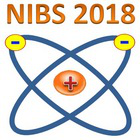Speaker
Dr
Taneli Kalvas
(University of Jyvaskyla, Department of Physics)
Description
Today's new developments, such as CERNs Linac4 injector, pose strong demands on the extraction and LEBT systems. Designing such systems is challenging. First of all the H- ion beam formation is difficult to model: the physics taking place at the extraction sheath is rich and approximations have to be made. The extraction system is strongly affected by the need for co-extracted electron separation from the ion beam using a magnetic filter at a relatively early stage to avoid adverse space charge effects on the ion beam, mainly observed as increased transverse emittance. In many cases the electron beam power sets limits to the energy at which the dumping can be performed. As a result one of the three methods is often chosen for separating the electrons:
(1) dumping at the puller electrode before acceleration to full energy,
(2) dumping at a decelerating einzel lens or
(3) dumping at an intermediate low energy electrode before the puller electrode.
This paper discusses the H- beam formation and emittance in the light of the results from CERNs Linac4 RF-driven ion source and the TRIUMF-type filament-driven ion source and discusses the different extraction and dumping strategies used in these sources.
Primary author
Dr
Taneli Kalvas
(University of Jyvaskyla, Department of Physics)
Co-authors
Daniel Fink
(CERN)
Daniel Noll
(CERN)
Dr
Jacques lettry
(CERN)
Dr
Oystein Midttun
(CERN)

